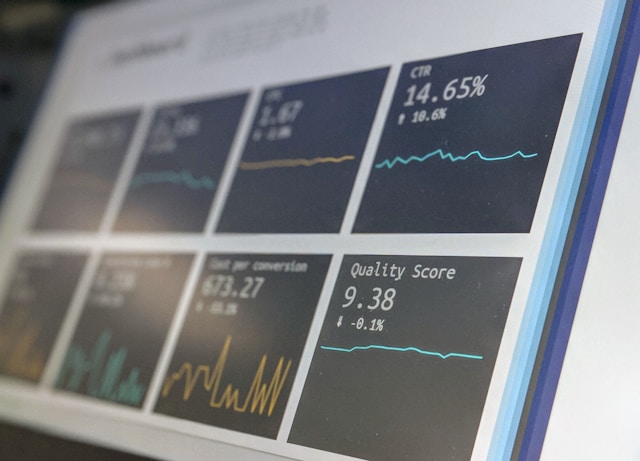Search Engine Optimization (SEO) has come a long way from keyword stuffing and backlink hunting. In 2025, SEO isn’t just a digital marketing tactic—it’s a full-blown strategic pillar that shapes how major brands build visibility, drive traffic, and dominate search results. What’s surprising, though, is how wide the gap still is between how big brands approach SEO and how smaller businesses or newcomers attempt it. Behind closed doors, enterprise-level SEO has become a finely tuned machine.
SEO Is No Longer Just About Google
Yes, Google still owns the lion’s share of search traffic. But in 2025, big brands will understand that SEO extends far beyond Google’s search bar. Amazon, TikTok, YouTube, Pinterest, Reddit—these platforms have evolved into vertical search engines in their own right. People now search for product reviews directly on YouTube. They discover restaurants through Instagram Reels. They find tutorials on TikTok. These are all forms of search behavior, and big brands are optimized for all of them.
Instead of focusing all efforts on traditional SERPs (Search Engine Results Pages), leading brands are building SEO strategies tailored for each platform. They optimize Pinterest pins with alt text and keyword-rich descriptions. They tag YouTube videos with semantic keywords and generate transcripts for better visibility. Their TikToks have on-screen text to enhance discoverability through TikTok’s evolving algorithm. In essence, big brands understand that modern SEO is omnichannel—and they structure their content accordingly.
Intent-Driven Content, Not Keyword-Driven Content
One of the biggest mindset shifts among successful SEO teams is their obsession with search intent. In 2025, targeting keywords without fully understanding why someone searches for a term is a fast track to irrelevance.
Search engines have become context-aware. They know when someone searches “best running shoes,” they’re likely in research mode—not ready to buy immediately. Big brands map out the full customer journey and create content for each stage of that journey. Informational blog posts. In-depth guides. Comparison tools. Product reviews. Quick video snippets. They build content ecosystems that surround every potential customer touchpoint.
Even better, these brands invest in long-form pillar content and then break it down into micro-content tailored for various platforms. This creates content loops that feed off one another, building authority, trust, and relevance across multiple domains.
Technical SEO for Enterprise Sites Is a Whole Different Beast
Large websites with thousands (sometimes millions) of pages require a very different SEO approach than a 10-page small business site. Big brands treat technical SEO for enterprise sites as a continuous, data-driven operation—not a checklist.
They implement scalable solutions for internal linking structures, canonical tags, schema markup, and crawl budget optimization. Their teams audit server response times and mobile usability on a monthly basis. They invest in server-side rendering, edge caching, and Core Web Vitals optimization to ensure their sites are lightning fast and user-friendly across devices.
More importantly, these brands treat their CMS as an SEO asset, not a liability. They build custom templates that enforce on-page best practices automatically. Meta tags are dynamically generated. H1 and H2 structures are locked into the hierarchy. Page versions are localized and tracked. SEO isn’t something added after a page is published—it’s embedded into the design and development process from the start.
AI and Automation Are Fueling Smarter SEO Decisions
Artificial intelligence isn’t just a buzzword in 2025—it’s an SEO accelerator. Big brands are using AI tools not to write robotic content, but to analyze vast amounts of data in seconds. They leverage AI for:
- Predictive keyword research based on emerging trends
- Entity recognition to improve topical authority
- SERP feature tracking to understand how content surfaces in different formats (People Also Ask, snippets, maps, etc.)
- Competitor content gap analysis
- Real-time content optimization suggestions
What sets them apart is not the tools—they’re available to everyone—but how they use them. Instead of chasing AI-generated content, they combine automation with editorial oversight. Human writers ensure brand tone, emotion, and depth remain intact, while AI speeds up the grunt work.
Structured Data Is Standard, Not Optional
If content is king, structured data is its translator. Big brands know that schema markup is not just for e-commerce product pages anymore. They’re implementing schema across blog posts, FAQ sections, how-to guides, events, job listings, and even video content.
Structured data helps search engines better understand and index the content, often resulting in rich snippets that significantly increase visibility and CTRs. Whether it’s star ratings, featured images, or site links, schema enhances how content appears on the SERP. In 2025, structured data is no longer optional. It’s part of the blueprint from day one.
User Experience Is an SEO Signal—Not a Side Project
What many people still underestimate is how much SEO depends on a seamless user experience. Big brands design with performance, accessibility, and mobile usability at the core—not just for aesthetics, but because search engines now reward it.
Pages that load slowly, bounce users quickly, or confuse visitors with poor layout suffer in rankings. Enterprise SEO teams monitor UX metrics like time on site, scroll depth, and task completion rates. They A/B test layouts. They personalize CTAs. They make navigation intuitive.
In a nutshell, they treat SEO as experience optimization, not just search optimization.
Internal Collaboration Is a Superpower
Most smaller organizations treat SEO as a marketing silo. Big brands don’t. Their SEO strategies are tied into product development, content creation, UX design, social media, and even customer support.
Why? Because SEO touches everything.
Customer service queries help inform FAQ pages and blog posts. Product teams feed updates to content strategists for better alignment. Developers work with SEO leads to build scalable page templates. When everyone is aligned, SEO becomes a shared responsibility—and that collective intelligence leads to stronger performance across the board.
Brand Authority and E-E-A-T Are Playing a Bigger Role Than Ever
In 2025, Google’s E-E-A-T framework (Experience, Expertise, Authoritativeness, Trustworthiness) is no longer buried in SEO handbooks. It’s front and center in every strategy.
Big brands invest in building author profiles, citing credible sources, showcasing experience, and being transparent with their audience.
Final Thought: SEO in 2025 Is an Ecosystem, Not a Hack
What big brands understand that many others miss is this: SEO success doesn’t come from a single tactic. It’s the result of building a system that supports discoverability, trust, and usefulness—across every touchpoint.
From technical SEO for enterprise sites to intent-driven content creation, from schema to AI-powered insights, the best in the game are always thinking a few steps ahead. They’re not reacting to algorithm updates—they’re architecting their presence in a way that’s future-proof.




Leave a Reply